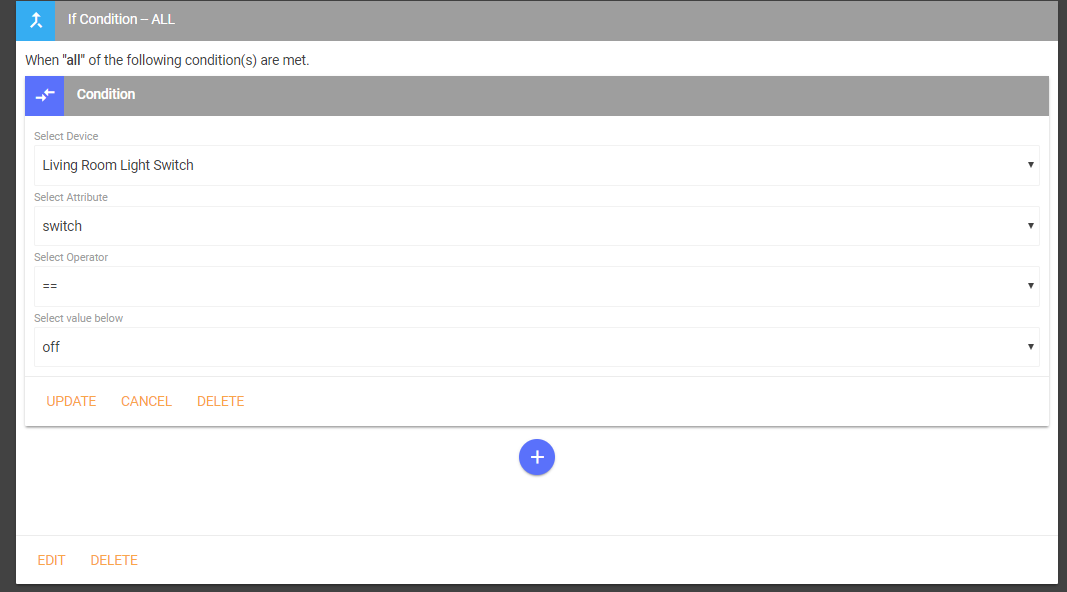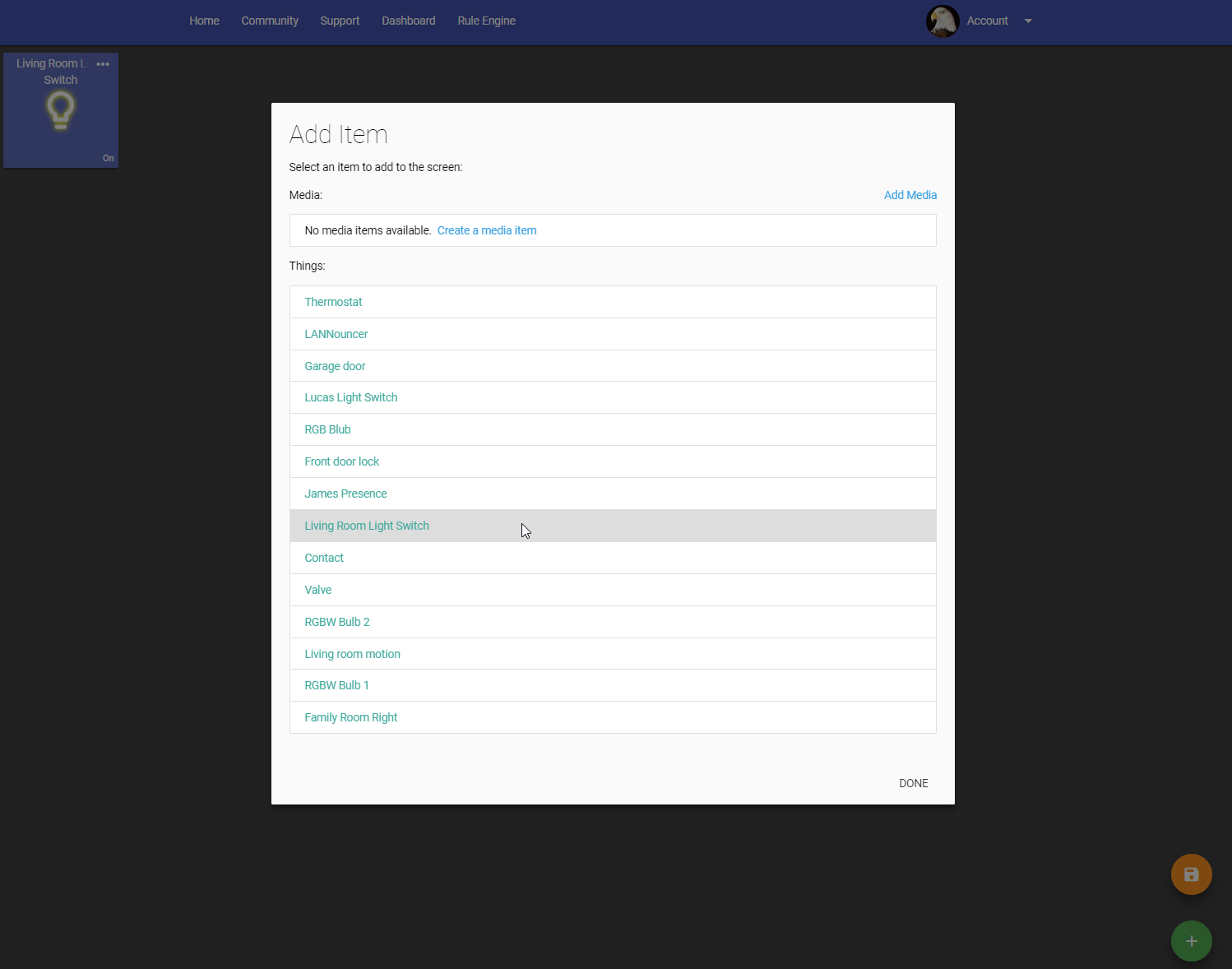How to control multiple devices with one tile in Dashboard?
You can leverage the SharpTools Rule Engine to control multiple devices from a single tile in your dashboard.
High Level Concept
- Create a Rule to control multiple devices
- Add the Rule to your dashboard
Guided Steps
- 1
- Create a Rule
Open the SharpTools.io Rule Engine, then tap the green + button to create a new rule - 2
- Add your device actions to the Flow section of the rule
In the Flow section of the rule: tap the + icon, select the Device action, and configure your desired device action. Repeat this for each of the additional devices you'd like to controlYou can ignore the triggers section of the rule as we will directly run the rule from our dashboards.Note: As an alternative approach, you could use a True/False variable to toggle a set of devices on or off. In this case, you would have two triggers -- the variable changing to `True` and the variable changing to `False`. The first step in your flow would be an IF Condition checking if the variable was true or false so you could determine if you wanted to turn on a set of devices or turn them off. - 3
-
Add the Rule to your Dashboard
Open your desired SharpTools dashboard for editing. Tap the green + to add an item. Expand the Rules section and tap your newly created rule to add it to your dashboard.You can optionally edit the newly added rule tile to customize the label, icon, and style!
Now when you tap the rule tile it will run your rule and control multiple devices at once!
Legacy Approach (tap to expand)
Legacy Approach
This can be achieved by creating a Virtual Switch in your smart home platform, for example SmartThings, and create a rule in SharpTools.io to control multiple devices using this newly created virtual switch as the trigger. See below for the steps:
Step 1: Create a virtual switch in SmartThings
- Go to https://account.smartthings.com/ and login with your SmartThings credential
- Select desired location under My Locations tab
- Go to My Devices tab, and click on "+ New Device"
- Fill in the Name, Label, Device Network Id fields with the name your preferred
- Select "Virtual Switch" in Type, and select your desired Location/Hub
- Click on Create

Step 2: Add the new device to SharpTools.io
Since this virtual switch is newly created in SmartThings, we need to follow the steps below so SharpTools.io is aware of this new device.
- In SharpTools.io, click on your account menu at right top, and View Account.
- Click on ADD THINGS button
- Login with your SmartThings credential, and select this new virtual device (Living Room Light Switch in this example)
- Click on Authorize

Step 3: Create rule to control multiple devices
So let's create a rule to turn on/off multiple bulbs by using this virtual switch
1. Go to Rule Engine in SharpTools.io
2. Click on CREATE RULE
3. Fill in rule name
4. In Triggers section, click on " +" button to add two triggers with this virtual switch when its switch attribute value equal ( ==) or not equal ( !=) to " off". (So this rule will be triggered no matter what's its switch value is changed to.)

Don't forget to tap on Save / Update in each trigger when you are done editing.
5. In Flow section, add a condition check by clicking on " +" button and select IF_CONDITION.
6. In the Condition card, select virtual switch as the device and check if its switch value is off, and click UPDATE

7. In the " Then" and " Else" flow, add actions to turn on/off the real physical light bulbs accordingly by clicking on " +" button and select ACTION in each flow.
8. In " Then" flow, let's add actions to turn the two physical light bulbs to off by selecting the light bulb as the device, and off as the command. In " Else" flow, we will create the same actions but select " on" as the command.

Don't forget to click on Save / Update in each trigger when you done editing.
Now you can add this virtual switch to your dashboard and use this tile to control both light bulbs in the same time.

